What is the purpose of the alligator shear
426It mainly lies in efficient and precise cutting and processing of metal sheets or metal structures
View detailsSearch the whole station
Choosing the right industrial shredder can feel complicated. You have a specific material to process, and you need a machine that can handle it reliably and efficiently.
At Fude Machinery, we know the most important question is always: which shredder is right for my material? The answer determines the success of your entire operation. As a manufacturer, we build these machines every day. We want to give you a clear and simple guide.
This will help you understand the three main types of shredders we produce—single-shaft, dual-shaft, and four-shaft—and match them to your specific needs, from soft plastic films to tough hazardous waste.
This article will help you understand:
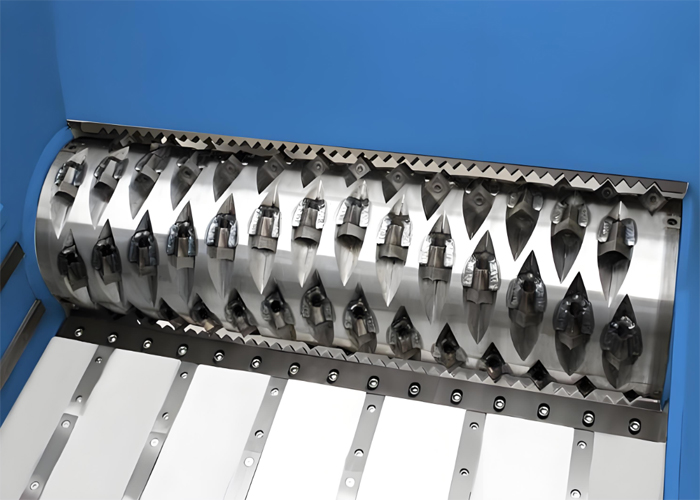
Single axis knife roller
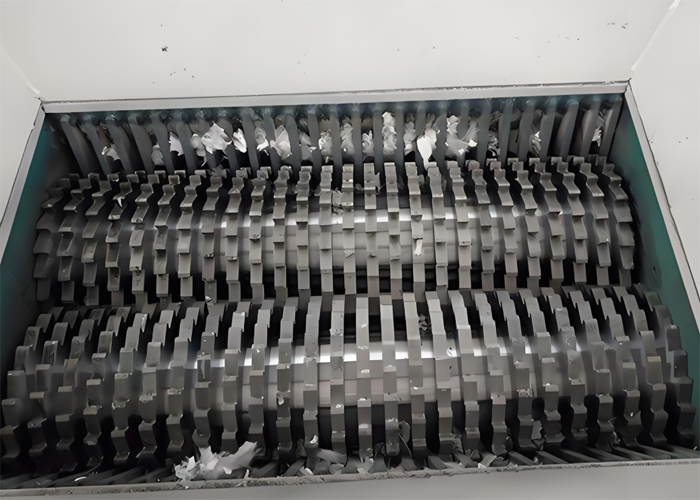
Dual axis knife roller
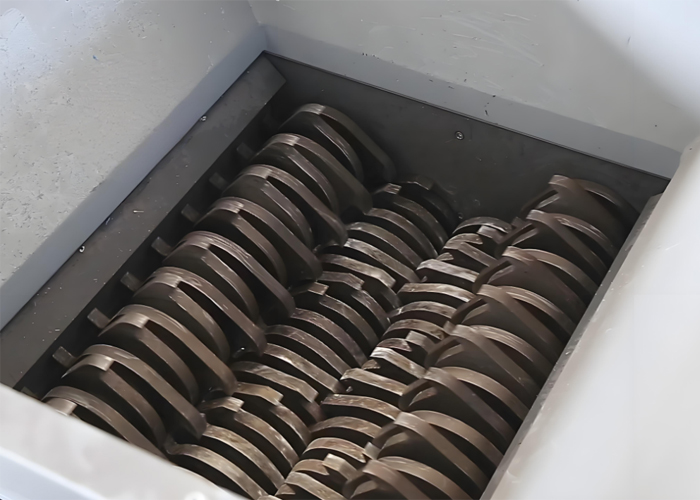
Four axis knife roller
The type of shredder you need depends almost entirely on your material. Think of our shredders as different kinds of specialized tools. You would not use a small pair of scissors to cut a thick rope. In the same way, you would not use a shredder designed for plastic film to process scrap cars. Understanding the basic job of each shredder type is the first step.
Shredder Selection at a Glance
| Shredder Type | Primary Action | Best For | Output Size |
|---|---|---|---|
| Single-Shaft | Slicing and Cutting | Soft or light materials needing a uniform size (plastics, textiles). | Small and Consistent (controlled by a screen). |
| Dual-Shaft | Tearing and Ripping | Bulky, medium-to-tough items (tires, wood, light scrap metal). | Rough, Random Strips (no screen). |
| Four-Shaft | Tearing and Sizing | Mixed, tough, or sensitive materials needing a specific size in one step. | Medium and Consistent (controlled by a screen). |
Your Challenge: Soft, light materials like plastic film, agricultural films, and large woven bags have a big problem. They are so light they can float above the cutters. They can also stretch and wrap themselves around the shredder shafts, causing jams and stopping production.
Our Solution: The Single-Shaft Shredder.
This is the perfect tool for the job. The single-shaft shredder uses a hydraulic pusher ram. This ram physically pushes the light, fluffy material into the fast-spinning rotor. This ensures the material cannot escape the cutters. Once shredded, the pieces fall through a screen at the bottom. Only pieces that are small enough to pass through the screen can exit the machine. This guarantees a consistent, small output that is perfect for the next stage of recycling, like washing or pelletizing. This is a core part of our design for plastic film recycling lines.

Single-shaft shredder
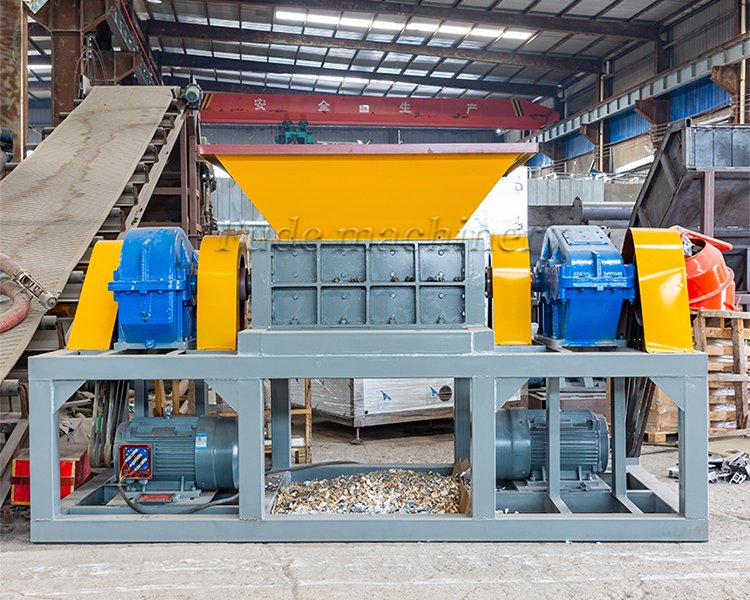
Double-shaft shredder
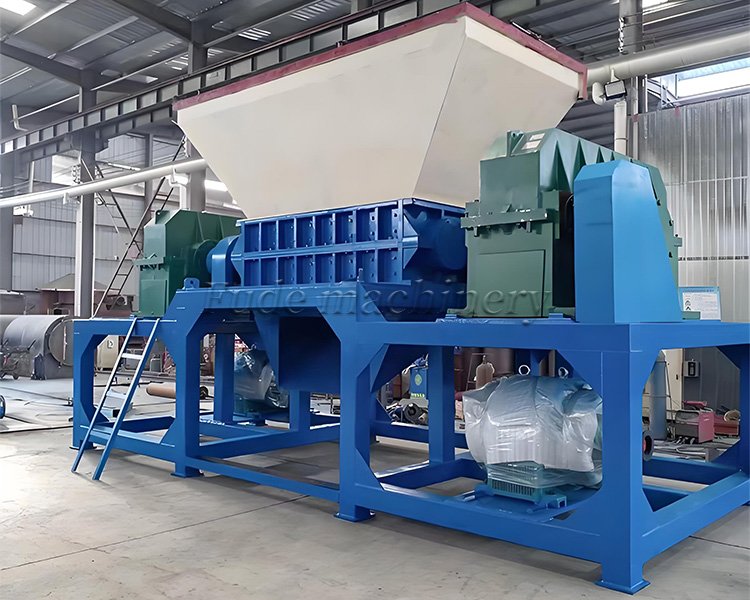
Four-axis shredder
Your Challenge: You need to process items that are large and bulky, but not extremely dense or hard. Items like wood pallets, 55-gallon plastic drums, and car tires take up a lot of space. Your goal is simply to break them down into smaller, more manageable pieces for easier transport or further processing.
Our Solution: The Dual-Shaft Shredder.
The dual-shaft shredder is the workhorse for this category. Its two powerful shafts spin slowly towards each other. The thick, hooking blades grab the tire or drum, pull it into the center, and tear it apart with incredible torque. It does not get jammed by bulky items. It just keeps pulling and ripping. The output is rough, randomly sized strips. This process is called “rough shredding” or “pre-shredding.” It is the perfect first step in many complete processing lines, like a full tire recycling plant where these rough strips are then sent to other machines.
Your Challenge: This is one of the toughest jobs. Your material is a mix of many things. It can be hard, abrasive, and contaminated. Scrap metal might have plastic and rubber attached. Electronic waste (e-waste) has metal, circuit boards, and plastic casings. Municipal Solid Waste (MSW) has everything. You need raw power and extreme durability.
Our Solution: The Heavy-Duty Dual-Shaft or Four-Shaft Shredder.
For pure volume reduction of scrap metal or breaking open garbage bags in an MSW facility, the dual-shaft shredder is often the best choice for its simple, powerful, and robust design. However, if you need a more controlled and uniform size from this tough material in a single pass, the four-shaft shredder is the superior solution. It provides the initial tearing power and then uses its secondary shafts and screen to ensure the e-waste or small metal parts are shredded to a predictable size, protecting downstream equipment.
Your Challenge: Your output size is not just a preference; it is a requirement. For data destruction (like hard drives or documents), the shredded pieces must be small enough that no data can be recovered. For hazardous solid waste (like medical waste or contaminated filters), the material must be completely destroyed and rendered unrecognizable for safe disposal.
Our Solution: The Four-Shaft Shredder or a Specialized Single-Shaft Shredder.
The four-shaft shredder is often the top choice for these high-security or sensitive applications. It combines powerful shredding with precise sizing in one machine. It continuously shreds material until it is small enough to fall through the screen. This makes it ideal for destroying products or processing hazardous materials. In some cases, if the material is not extremely abrasive, a single-shaft shredder can also be used. Its screen also guarantees a specific output size, making it a reliable choice for certain security applications. We provide these custom shredding solutions based on your exact security level needs.
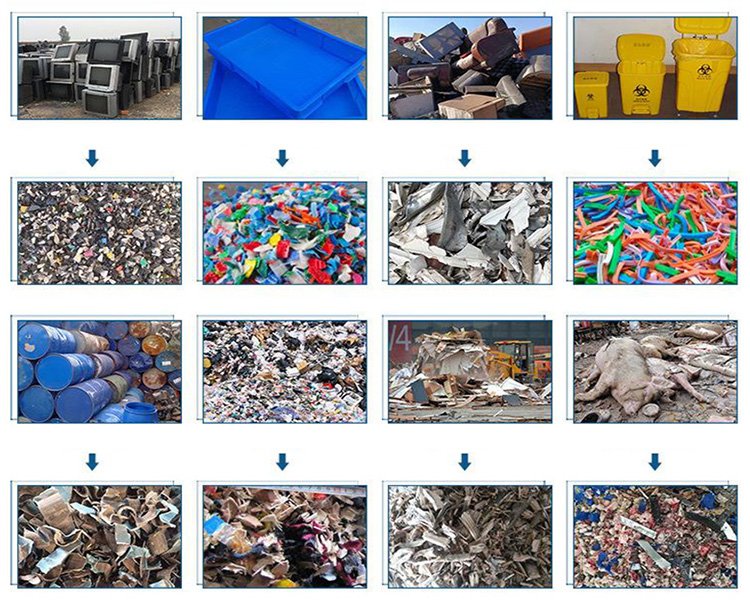
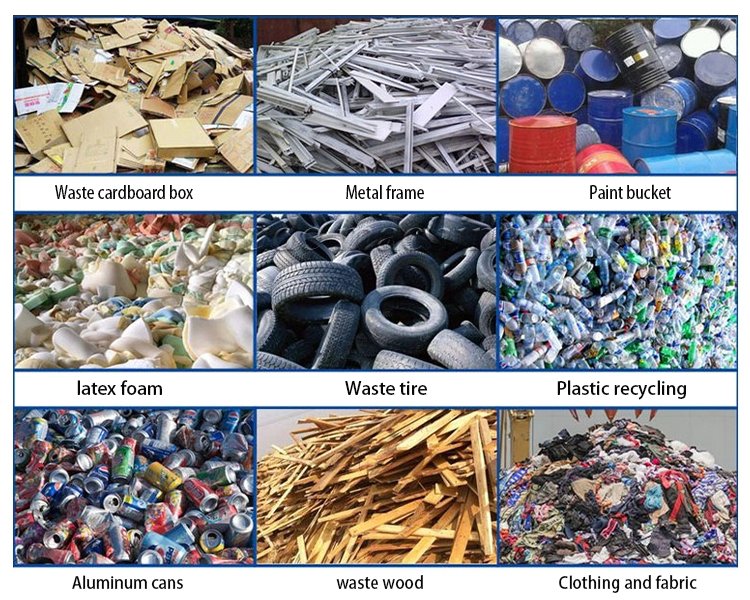
The future is about intelligence. In 2025, the shredders we build are getting smarter. They are equipped with advanced PLC controls and sensors. These systems can monitor the motor load and the material type in real-time. If the shredder detects a very tough piece of metal in a load of mixed scrap, it can automatically slow down or reverse to process it safely without causing a jam or damaging the blades. This “smart shredding” increases efficiency, reduces wear and tear, and allows one machine to handle a more varied diet of materials.
Question 1: What is the difference between a shredder and a granulator?
A shredder is a primary size reduction machine. It takes large items and reduces them to rough strips or chunks (around 20-100mm). A granulator is a secondary machine. It takes these smaller chunks and grinds them into very small, uniform pellets or granules (under 10mm). You often use a shredder first, then a granulator.
Question 2: Can one shredder handle all my materials?
It is possible, but not always efficient. A large dual-shaft shredder could technically shred both a tire and a plastic bottle. However, it would be overkill for the bottle and might not produce a small enough size for recycling. It is much better to choose a shredder that is optimized for your primary material.
Question 3: How important is a screen for my shredded output?
A screen is critical if you need a uniform, predictable output size. If you are selling your shredded plastic to a recycler who needs 40mm flakes, you must use a shredder with a 40mm screen (like a single-shaft or four-shaft). If you are just reducing the volume of wood pallets for transport, a screen is not necessary.

Choosing the right shredder does not have to be a mystery. The entire decision comes down to your material. Soft, light materials need the controlled cutting of a single-shaft shredder. Bulky items need the raw tearing power of a dual-shaft shredder. Tough or sensitive materials that need a specific size benefit from the hybrid power of a four-shaft shredder. By matching the machine to the material, you ensure a reliable, efficient, and profitable shredding operation.
The best way to be certain is to talk to an expert. Contact us at Fude Machinery. Tell us about your material. Send us a sample. We will use our manufacturing experience to recommend the perfect shredder for your business. Let’s build the right solution together.
It mainly lies in efficient and precise cutting and processing of metal sheets or metal structures
View detailsTable of ContentsIntroduction to Garbage Removal ServicesTop 10 Best Garbage Removal Services1. 1-800-GOT-JUNK?Key Features:2. Waste Management, Inc.Key Features:3. Junk KingKey Features:4. Republic ServicesKey Features:5. College Hunks Hauling Ju...
View detailsThe main raw material of traditional clay brick machineMaterials for modern industrial brick-making machinesRaw materials for cement brick making machineRaw materials for ecological/alternative material bricksRaw materials for special customized t...
View detailsMetal shredding is a crucial process in waste management and recycling. It involves breaking down metal waste into smaller, more manageable pieces, facilitating easier handling, transportation, and recycling. The shredded metal can then be melted ...
View details